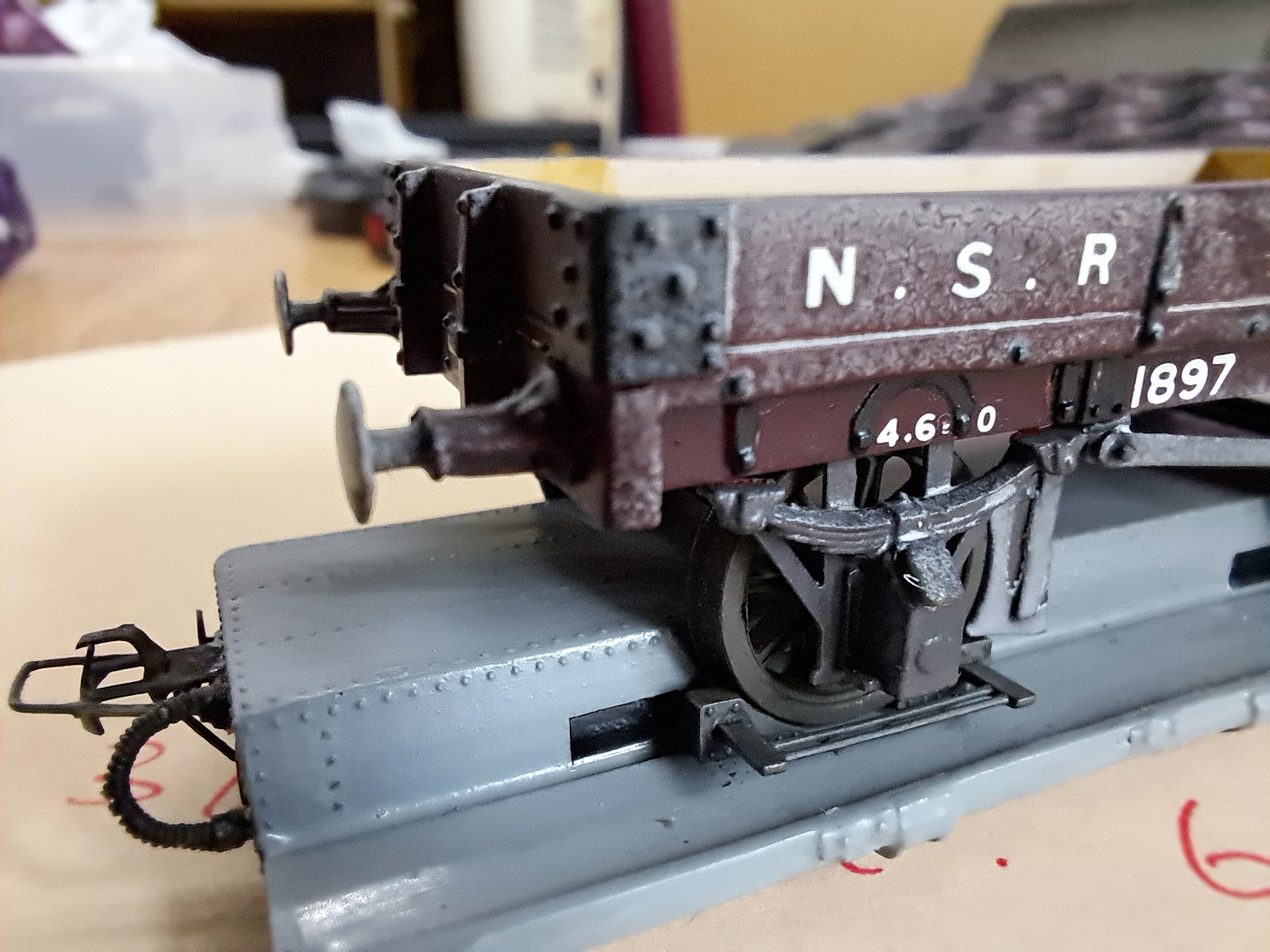My good friend, Matt, is embarking on an epic Leek & Manifold (L&M) tale. As is the way with these things, there is much planning and even more stock building. Along the way has been a few requests for bits and pieces such as axle boxes and springs for the coach bogies as well as seats for the coaches.
His attention has now moved onto the transporter wagons. Having built the transporter wagons he needs suitable standard gauge wagons to be transported and this is where another good friend, Simon, comes in. He has produced a beautiful North Staffs open wagon and, as is Simon's way, it's to P4 gauge (necessary in this case in order to fit the transporter wagon) and it runs perfectly - so perfectly that it rolls straight off the transporter wagon.
In real life the standard gauge wagons all had hand brakes but the L&M also provided an arrangement of a pair of chocks connected by a pair of rods. These appeared to be of a variety of designs but the reality is that they were probably hand made so differed considerably. I've produced two versions. The first has the side bar protruding horizontally
The second has the side bar protruding up at an angle in order to clear a fold up girder that existed on the transporter wagons as part of handling standard gauge milk tank wagons.As always, the pictures of the period are unclear and dimensions have to be guessed at. The method of locking the assembly onto the transporter wagon appears to consist of some vertical pieces of metal that slot into the wagon frame but these have not been modelled for simplicity. Here's a cruelly large photo of one of the chocks in place.
All in all it took 3 test prints and then one final print of the numbers that Matt wanted. Each print run takes less than an hour so it's less than a day's work to produce something that can be repeated on demand.
Interestingly, I did try the abs-like resin for this but I found the long thin rods required much more support than the usual resin so I settled on using my normal low odour resin to avoid countless support pips having to be removed.








.jpg)
.jpg)
.JPG)
.jpg)



